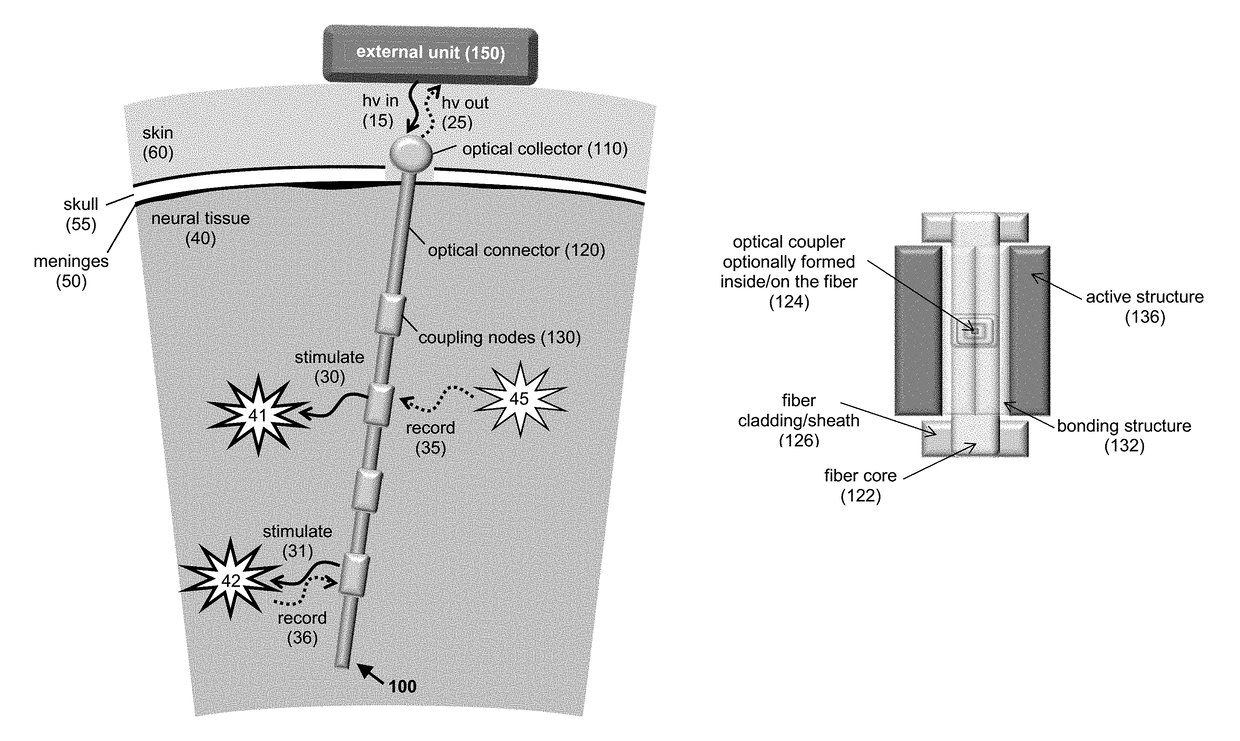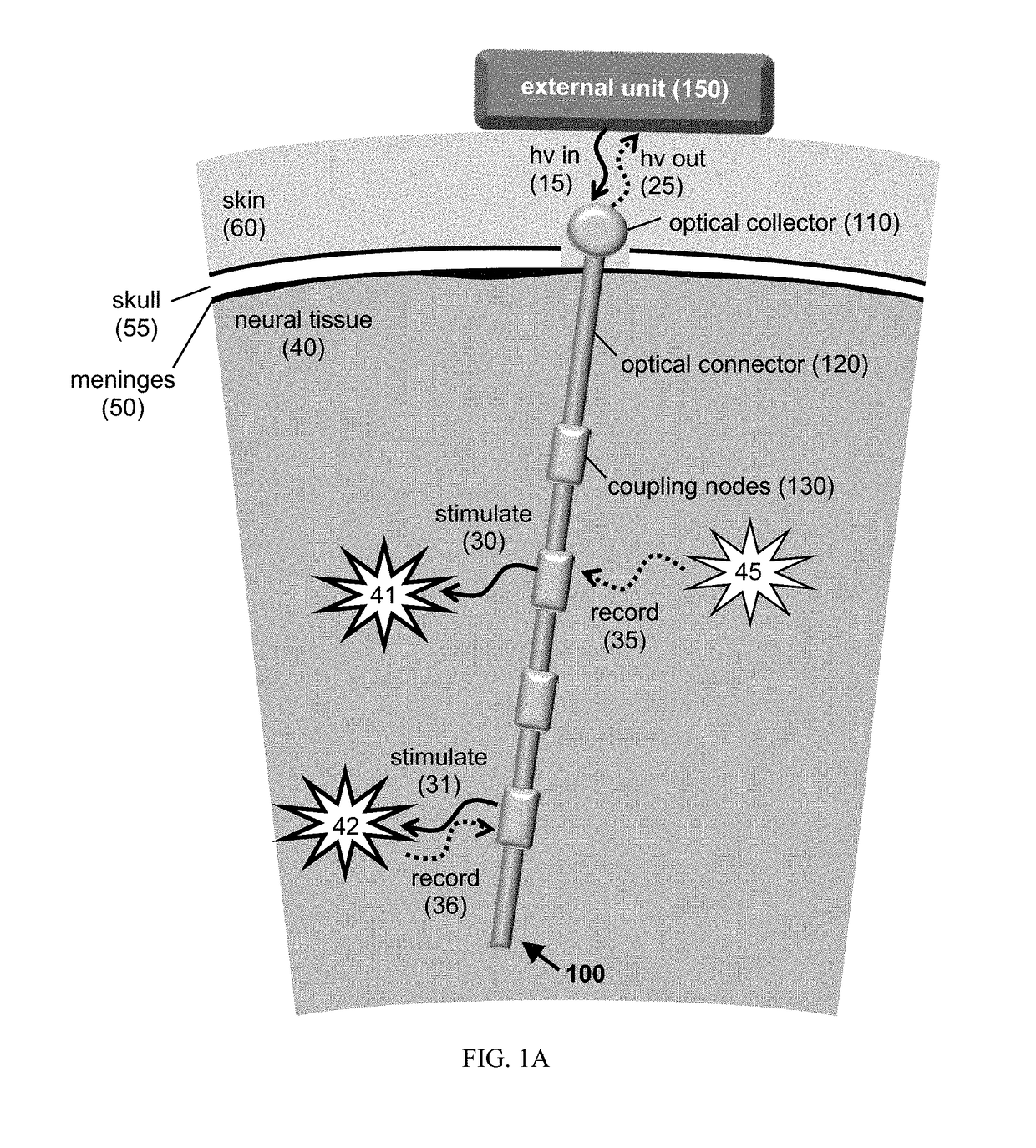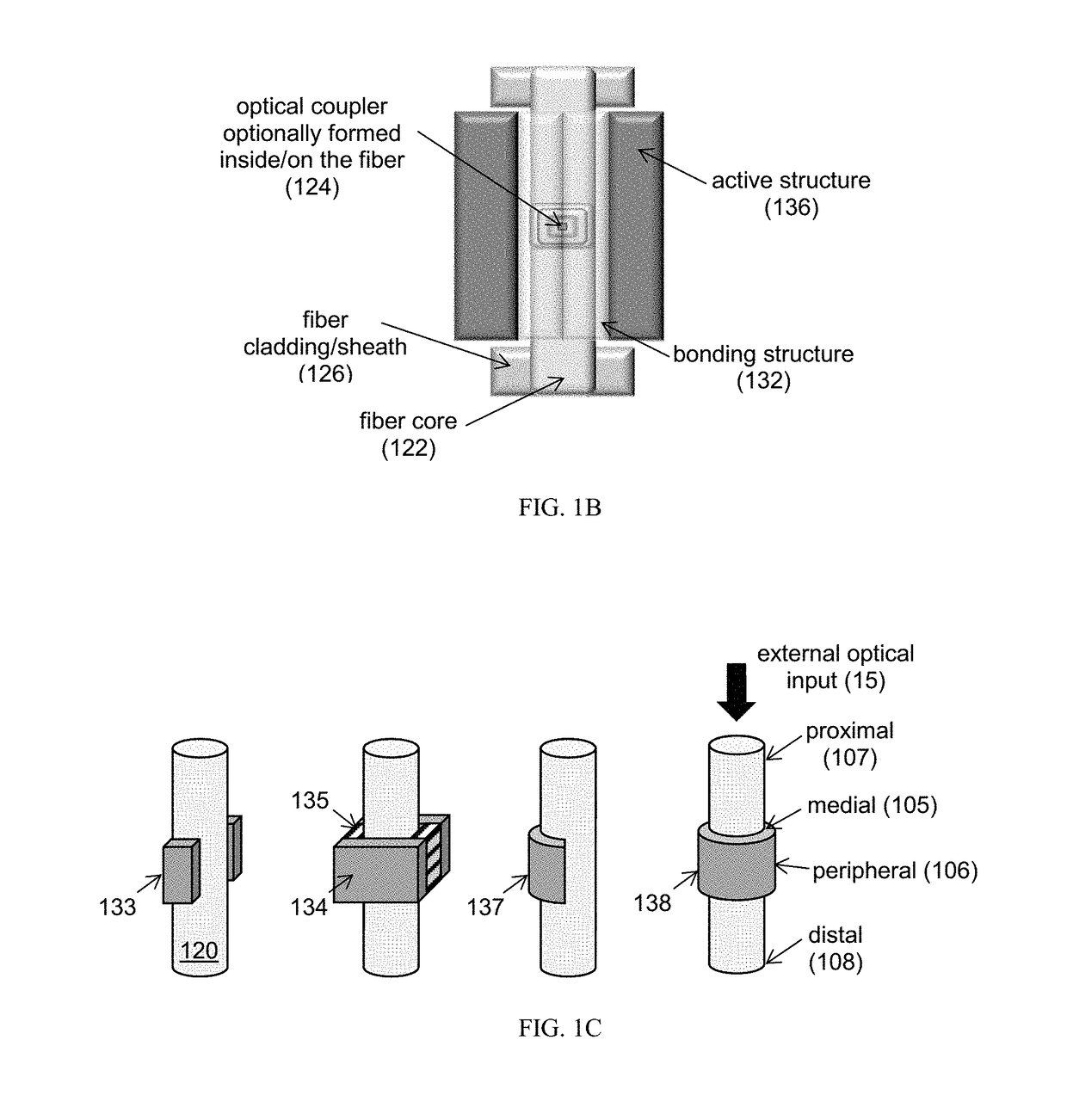Optoelectronic system and apparatus for connection to biological systems
a technology of biological systems and optoelectronic systems, applied in the field of optoelectronic structures capable of connecting to biological systems, can solve the problems of lack of spatial precision in either stimulating or detecting individual neurons or isolated regions within neural tissue, and the difficulty of implanting and maintaining probes without complications and degradation
- Summary
- Abstract
- Description
- Claims
- Application Information
AI Technical Summary
Benefits of technology
Problems solved by technology
Method used
Image
Examples
Embodiment Construction
[0038]The present invention features a system that provides an implantable, completely insulated system that does not expose any non-beneficial electrical connections to the tissue, either on external surfaces or encased within polymeric substrates of the system. Non-beneficial (e.g., non-therapeutic) electrochemical reactions can lead to degradation of the interconnections, and exposed electrodes in conventional neural probes can ultimately limit the lifetime and applicability of such systems. Power and data are delivered and extracted from the system through optical coupling, either through a fiber or free-space means. This allows an external unit (e.g., an external transceiver unit) to provide the needed power and telemetry needs for the experiment and / or medical application.
[0039]FIG. 1A shows an exemplary system including an apparatus 100 and an external unit 150. As can be seen, an optical connector 120 (e.g., an optical fiber) terminated by an optical collector 110 is embedde...
PUM
 Login to View More
Login to View More Abstract
Description
Claims
Application Information
 Login to View More
Login to View More - R&D
- Intellectual Property
- Life Sciences
- Materials
- Tech Scout
- Unparalleled Data Quality
- Higher Quality Content
- 60% Fewer Hallucinations
Browse by: Latest US Patents, China's latest patents, Technical Efficacy Thesaurus, Application Domain, Technology Topic, Popular Technical Reports.
© 2025 PatSnap. All rights reserved.Legal|Privacy policy|Modern Slavery Act Transparency Statement|Sitemap|About US| Contact US: help@patsnap.com



